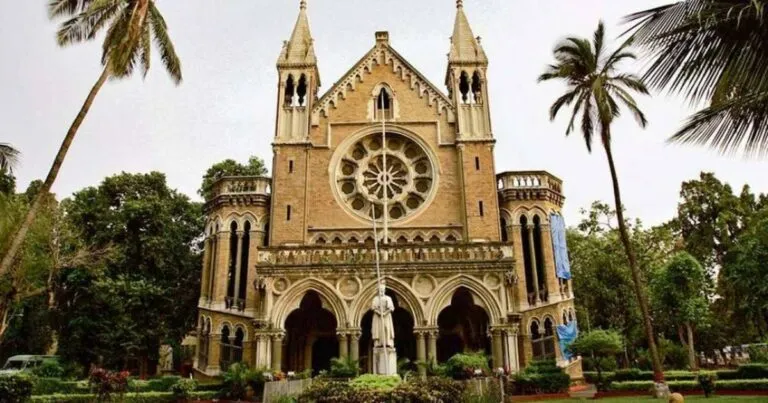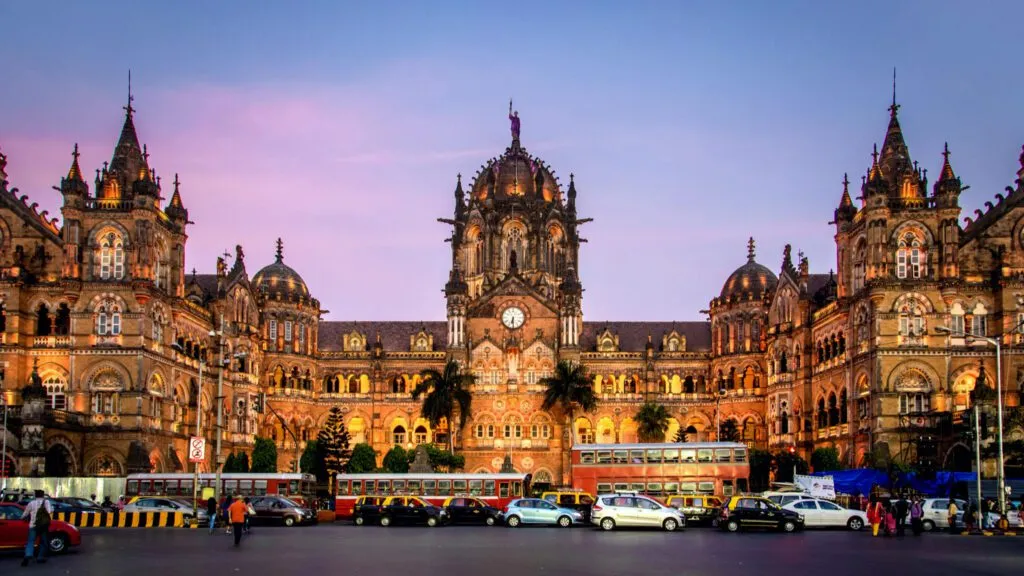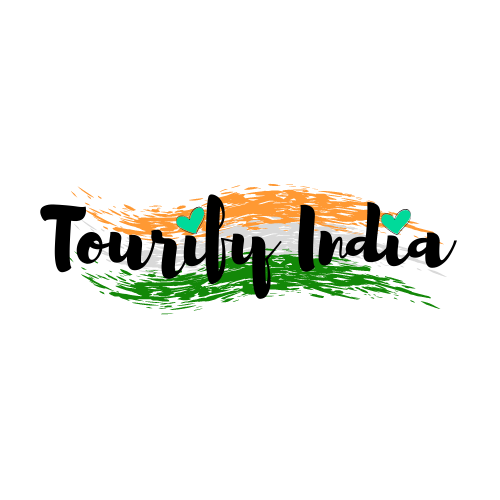Mumbai’s colonial heritage is a fascinating blend of culture, history, and architecture that has shaped the city’s landscape. Mumbai has been ruled by various colonial powers that have left a mark on the cityscape. The Portuguese were the first to visit Mumbai in the early 16th century, followed by the British, who transformed the city into a commercial metropolis. The Britishers, during their rule, built iconic landmarks that remain a significant part of Mumbai even after independence.
Why Mumbai’s Colonial Heritage Matters?
Mumbai’s colonial heritage matters because it shaped the city we see today, from its skyline to its civic institutions. During British rule, Mumbai evolved from a cluster of islands into a global trading hub, and many of its most important public spaces were defined during this period. The rise of Mumbai’s colonial buildings reflects how infrastructure, governance, and urban planning were introduced to support a growing metropolis.
These historic structures were not built in isolation. They were part of a larger vision that connected railways, ports, courts, universities, and markets, turning Mumbai into one of the most influential cities in Asia. Even today, colonial buildings in Mumbai continue to function as working institutions, reminding residents and visitors of the city’s layered past.
Understanding this legacy helps travellers see beyond monuments and appreciate how colonial architecture in Mumbai influenced everyday life. Many of these landmarks also fit within the broader narrative of British-built structures in India, showcasing how architectural ideas travelled and adapted to local conditions.
Why Is Mumbai’s Colonial Heritage Worth Exploring?
Exploring the colonial past on your Mumbai tour is more than just a series of historical events- it is about cultural exchange, urban transformation, and resilience in the different architectural forms. It is an understanding of the city’s past and the people who lived here many years ago. It’s about discovering the intriguing stories of the buildings with your Mumbai Private tour guide. It’s about experiencing the rich culture on your city tour.
Mumbai is a city of contrasts, where these iconic places coexist in the chaos of the new metropolitan. From the grand Victoria Terminus (now Chhatrapati Shivaji Terminus) to the majestic Rajabai Clock Tower. Mumbai is a living museum of the city’s history.
As Mumbai evolved into a bustling metropolis, the British left a significant mark with their Gothic, Victorian, and Indo-Saracenic architectural styles. These wonders represent the historical and cultural legacy of the British Raj.
Let’s explore eight iconic British-era buildings and their significance as popular sightseeing destinations in Mumbai.
University of Mumbai:
The University of Mumbai is one of India’s oldest and most prestigious universities. This massive Gothic-style structure, built in 1857 as the University of Bombay, is a wonder of British colonial architecture. The aspects that make the institution a well-liked tourist attraction for visitors to Mumbai are the clock tower and arched entryway. Aspiring researchers and students have enrolled on the campus to take in the legacy of academic quality and history that the university represents.
The Gateway of India:
One of Mumbai’s most recognizable monuments is The Gateway of India. This famous British-era monument, located in Colaba, was erected to honour King George V and Queen Mary’s 1911 visit to India. It is now one of the city’s most popular tourist destinations, attracting thousands of people each year. The monument is often counted among the most prominent buildings built by the British in India, reflecting the scale and vision of the colonial era. Visitors can enjoy stunning views of the Arabian Sea and the world-famous Taj Mahal Palace Hotel from the Gateway of India.
The Taj Mahal Palace Hotel:
The Taj Mahal Palace is a luxurious and well-known hotel in Mumbai. With its massive façade, graceful arches, and elaborate detailing, it is a remarkable example of British colonial architecture constructed in 1903. Over the years, the hotel has welcomed several notable visitors. The Taj Mahal Palace Hotel in Mumbai is more than a luxurious accommodation choice; it is a symbol of the city’s resilience. Despite being one of the targets of the 2008 Mumbai terrorist attacks, the hotel reopened a month later, showing the spirit of the city and its people.
The Queen Victoria Railway Station:
The Queen Victoria Railway Station, also called the Chhatrapati Shivaji Terminus, is a historic station serving Central Railways’ headquarters. One of the busiest train stations in the nation, this 1887-built UNESCO World Heritage Site serves millions of travellers every day. The station’s stunning Gothic-style architecture and elaborate carvings make it a popular attraction for visitors. A guided station tour is a must-do experience for tourists visiting Mumbai, providing insight into the city’s rich history and architecture.
Local Big Ben of India:
The Rajabai Clock Tower, popularly known as the Local Big Ben of India, is one of Mumbai’s popular monuments. This magnificent structure, which was constructed in the 19th century, is situated on the University of Mumbai’s Fort Campus. The clock tower is a stunning specimen of Gothic architecture designed after London’s well-known Big Ben. A well-known watch company, Lund & Blockley, designed the clock at the tower. The tower has 24 statues depicting the life of ordinary Indians during the British colonial era.
Crawford Market:
One of Mumbai’s most well-known and historic markets is Crawford Market, also referred to as Mahatma Jyotiba Phule Market. This Victorian-style structure was constructed in 1869 and is a favourite tourist attraction. Crawford Market was named after Arthur Crawford, Mumbai’s first municipal commissioner. In memory of the social reformer Jyotirao Phule, the market was renamed Mahatma Jyotiba Phule Market following India’s independence. The market is renowned for its vibrant stalls and stores that provide various goods, including fresh food, exotic spices, fabrics, home decor, and souvenirs.
Mumbai Corporation Building:
The Mumbai Corporation Building, often known as the BMC Building, is another iconic structure in Mumbai. The Brihanmumbai Municipal Corporation’s headquarters are located in this magnificent 1893 structure. The structure is a popular tourist site because of its impressive architecture and historical exhibits. As one of the prominent British buildings in Mumbai, the BMC Building represents the administrative strength and civic planning of the colonial era.
Bombay High Court:
The Bombay High Court, founded in 1862, is one of India’s oldest and most distinguished courts of law. Located in Mumbai’s Fort, the structure is a magnificent example of Gothic architecture. Your tour guide in Mumbai will give you all the information about the building’s stunning architecture and historical importance on a guided tour. The court remains a striking example of Mumbai’s colonial buildings and British judicial design.
Cultural Significance of Mumbai’s Colonial Legacy
The colonial era shaped Mumbai far beyond architecture, leaving a lasting impact on its daily life and development. Many landmarks became centres of governance, education, and social life, helping define modern Mumbai. From courtrooms to clock towers, British buildings in Mumbai introduced new architectural styles. These designs blended European influences with Indian craftsmanship, creating a look that still feels distinctive today.
Over time, these structures turned into symbols of the city itself. Several Mumbai’s iconic buildings from the colonial era remain part of everyday life, functioning as railway stations, markets, and civic offices. The coexistence of Mumbai colonial buildings with modern high-rises reflects the city’s ability to honour its past while embracing change.
Preserving this heritage helps people understand how colonial architecture in Mumbai shaped the city’s cultural identity. These spaces continue to define Mumbai’s character and remain some of its most admired Mumbai iconic buildings.
Conclusion
The architectural and cultural wonders of Mumbai’s colonial history continue to inspire and enthral tourists worldwide. These British-era structures are reminders of the city’s rich and diverse history. Walking through these sites allows visitors to truly appreciate British architecture in Mumbai and its lasting impact on the city’s identity. Gain a deeper understanding of the city’s evolution and people with Mumbai private tours. Book a tour with Magical Mumbai Tours if you plan a vacation to Mumbai. Our local guides will lead you on a tour through the city’s colonial past and provide insights. Don’t miss out on this opportunity to experience the best of Mumbai’s rich history. Book your trip today!












